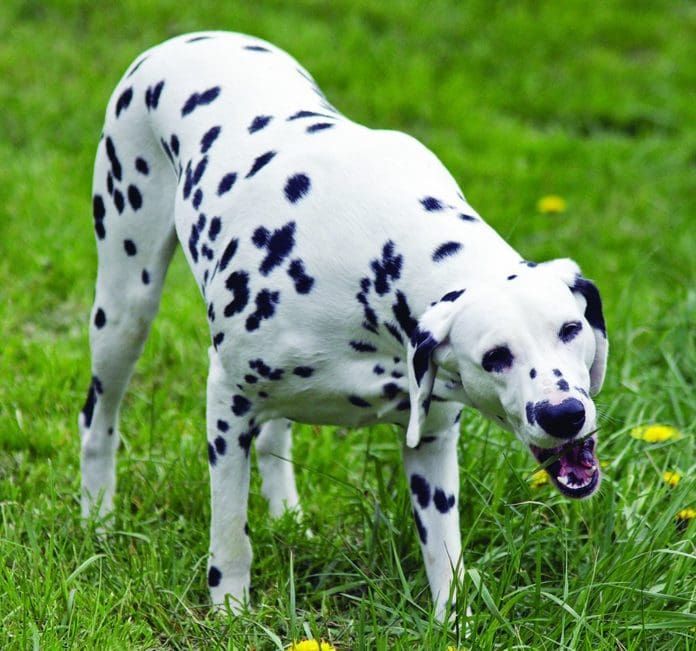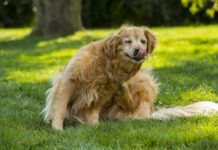[Updated July 12, 2017]
I sat in wonder as I watched the coyote nibbling twigs from a wild rose plant, just 100 feet away. It was late September and the rose hips were red, ripe, fat, and juicy. Delicious, in fact, whether it be for tea or to tuck into one’s mouth as a tart boost of vitamin C in the course of a long day afield. What made me wonder wasn’t that the wily, scruffy-smallish dog was dining at a wild rose bush; that is typical foraging behavior. Everything in the forest eats and relishes rosehips – even me! But this guy wasn’t eating the fruit. Instead, he was selectively nibbling from the end twigs of the bushy plant. The coyote was, like so many other animals I have observed, using plants – herbs – as something other than food. He was taking medicine.
As an herbalist I already knew rose twig tea is an internal astringent, helpful for relieving inflammation in the lower gastrointestinal tract. It can also help reverse diarrhea or inhibit minor cases of internal bleeding. Externally the tea works well to relieve mosquito bites – a common malady in these parts. I learned these uses from books and other herbalists, but Wile E. Coyote didn’t learn from anything but his own intuition. He had a specific need that he was trying to address through pure instinct, a natural gift that humans have largely lost.
I spent a total of 10 years living atop a remote ridgetop in the Bitterroot Mountains of Montana, studying plants and the wildlife that lives among them. During that time there were countless occasions when I would see coyotes, deer, elk, and moose nibbling on the bitter blossoms of knapweed, or chewing the seed tops of cow parsnip – a native member of the parsley family that early settlers and Native Americans used to alieviate gastric bloating and cramping. I even once witnessed a mountain lion as it rolled like a giant house cat in a pungent stand of wild valerian, utilizing the calmative, relaxing effects of the pungent herb through unique olfactory receptors – the same nose-direct-to-brain connection by which housecats enjoy a dose of catnip.

Mellbee80 | Dreamstime.com
I learned through my research during the writing of Herbs for Pets that I wasn’t the only one who had discovered the amazing abilities of how animals can self-medicate from nature’s wild pharmacy. In 1993, Eloy Rodriguez, of the Phytochemical and Toxicology Laboratory at the University of California, Irvine, collaborated with Richard Wrangham of Harvard University’s Department of Anthropology to produce Zoopharmacognosy: The Use of Medicinal Plants by Animals, a fascinating study of how wild animals use tropical plants to self-medicate.
Several studies followed, all with a similar conclusion: wild animals know not only know which plants to select and ingest, but also exactly how much to take and when to stop their herbal therapy.
Plants are the most universally accepted form of medicine of all life on Earth, and it is quite clear that the foundations of modern internal medicine came from early man’s observation of wild animals. Animals are Earth’s original herbalists, and our first teachers of internal medicine.
Dogs can help themselves, too
There is evidence to support the theory that dogs and other domesticated animals also possess the innate ability to self-medicate from nature’s bounty.
At least one person has devoted her life to researching this ability. Caroline Ingraham, founder of the Ingraham Academy of Zoopharmacognosy in the United Kingdom, has been studying how to help connect captive and domestic animals with plant-based medicines that they themselves can select and utilize.
Ingraham recently described a case involving a 3-year-old Jack Russell Terrier named Mouse, who ripped a deep hole in his chest muscles while climbing through barbed wire. She claims that Mouse was presented with a variety of herbs and other natural healing materials, and selected (likely by pawing or sniffing) a combination of yarrow and green clay, a wound-healing combination that has been used by human herbalists to heal wounds since the Dark Ages. The poultice was applied to Mouse’s wounds at regular intervals, and within a couple of weeks he was completely healed.
This is just one of many cases cited by Ingraham, whose work was born purely out of true love of animals and a deep respect of their choice of medicine. Which brings me to the work I wish to share with you in WDJ in the future.
Regardless of how far removed they may be from their wild canid ancestors, the dogs in our lives are metabolically and energetically designed by nature to utilize plants as their primary medicine. We see their struggle to access their choice of medicine all the time, from the eating of grass, to nibbling the ends off the household aloe plant, or a ravenous yet unusual craving for melon. But most people fail to see these behaviors as the cues that they really are: instinctive attempts to utilize the healing powers of plants. Grass for long fiber, and silica and other nutrients to maintain gut health. Aloe, for its healing and sometimes laxative properties. Melon, to cool the liver and help inhibit parasites.
My goal in the months to come is to share what I have learned about the safe and effective use of herbs in dogs. But more importantly, I want to help you take into heart and mind the importance of your role as an animal guardian, and the value of using herbs. The dogs who touch our lives, bring us smiles, and heal us every day do not have immediate access to the herbs they need, nor do most retain enough of their ancestor’s instincts to survive in the wild. It’s up to us to bring nature to them – to bring the right choices of their medicine into their lives.
To me, the deepest meaning and greatest rewards of using herbs is not with how we can exploit their chemistries, but with the deep connections they offer to the natural world around us. Herbs stand as living, healing entities that are here to serve all who walk above them or crawl beneath their roots. The goal of the holistic herbalist is not to suppress symptoms or crush what we recognize as a form of “disease,” but to help bring the body into a balanced state of wellness within itself, through utilization of a healing system that has been serving all life on Earth since the first mammal emerged more than 100 million years ago. It’s about honoring and trusting the nature that lives within and without all of us – and the rewards of this approach go way beyond disease prevention and reduction of veterinary expenses.
To use herbs at their greatest potential we must learn more about the true nature of the recipient. How does our dog’s body differ from ours? What constitutes optimum nutrition for a dog? How does his body deal with illness? What can be done, through the supportive chemistries and energies of herbs, to help the body do what it is naturally designed to do for itself – heal and stay healthy? These are questions from a holistic herbalist.
It has been sixteen years since I left my mountain ridge home in Montana. Since then I have traveled the world to speak, share, and learn – and I’ve learned so much. I look forward to sharing the answers I have found, so that you may share in the nature of your dog. And I promise: In pursuit of finding these answers we will not only find healthy solutions for the dogs we love, but new insights that can lead us onto a path of healing for our dogs, ourselves, and Earth as one.
Greg Tilford is the author of five books on botanical medicine for animals, including the acclaimed Herbs for Pets, the Natural Way to Enhance your Pet’s Life (i-5 Publications, 2nd ed. 2009). Tilford is a charter member of the Scientific Advisory Committee of the National Animal Supplements Council (NASC), and founded and currently chairs the Animal Products Committee of the American Herbal Products Association, with a mission to promote and protect responsible commerce of herb products intended for use in animals. Tilford is also the CEO and formulating herbalist for Animal Essentials, Inc., a company that produces natural supplements for companion animals, and lectures about herbs to veterinarians and owners worldwide.






